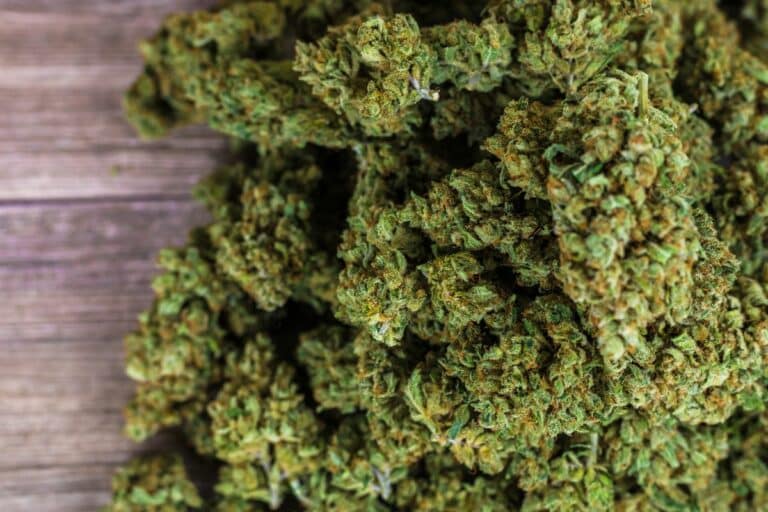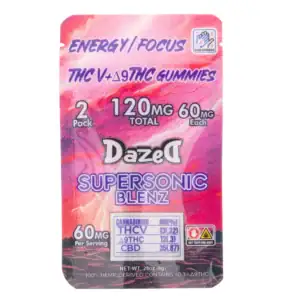Best Edibles for Parkinson’s: Optimizing Nutrition for Symptom Management
Navigating life with Parkinson’s disease (PD) is like walking a tightrope, using everything from pills and stretching to small routine changes. Discover how snacking on specific edibles might help ease those persistent PD symptoms. Even if the scientists haven’t reached a consensus, rumors say certain snacks could be your ace in the hole for battling PD challenges. Incorporating these snacks into your PD arsenal could unveil a new strategy for managing symptoms.
- Understanding Parkinson's Disease
- Benefits of Edibles for Parkinson's
- Types of Edibles Suitable for Parkinson's
- Safety and Legal Considerations
- How to Choose Edibles for Parkinson's
- Patient Case Studies and Evidences
- Regulatory Guidelines for Use
- Future Research Perspectives
- Frequently Asked Questions
- What are the benefits of Delta 8 in managing Parkinson's disease symptoms?
- Which cannabis strains are known to be most effective for reducing tremors in Parkinson's patients?
- How do Delta-9 THC levels influence Parkinson's symptoms and treatment?
- Can the presence of certain terpenes in cannabis improve tremors associated with Parkinson's?
- What role does CBD play in the treatment of Parkinson's disease, particularly for tremors?
- What are the comparative effects of Indica and Sativa strains on neurological disorders like Parkinson's?
- Frequently Asked Questions
As your understanding of PD deepens, exploring edibles that may offer symptomatic relief is a natural progression. Anecdotal reports and emerging research hint at the benefits of medical cannabis for those living with PD. For example, a systematic review suggests that cannabis could play a role in therapeutic strategies for PD, although empirical data is limited. Likewise, the overall diet can be refined to potentially reduce risks or manage symptoms more effectively, such as the incorporation of high-antioxidant foods to combat oxidative stress, which is a contributing factor in the disease.
It’s crucial to approach dietary changes with caution and knowledge, considering the intricate relationship between what you consume and how it affects your health. Discussions with healthcare providers are essential before making any significant adjustments, ensuring they align with your unique health profile. As you navigate the landscape of edibles for Parkinson’s disease, remember to focus on reliable findings and consult with professionals to determine the best fit for your health regimen.
Understanding Parkinson’s Disease
Parkinson’s Disease (PD) is a complex neurodegenerative disorder that affects movement and can cause other non-motor symptoms. Your understanding of this condition is vital in recognizing its impact on daily life and exploring potential dietary interventions.
Symptoms and Progression
Early-stage symptoms of Parkinson’s Disease may appear mild and include tremors, mainly on one side of the body, or a slight shaking of the hand. Rigidity and slowness of movement (bradykinesia) are also common. As PD progresses, these symptoms worsen and new ones may emerge, like impaired balance and coordination, leading to difficulty walking and performing simple tasks.
Neurological Mechanisms
At the heart of PD’s neurological mechanisms is the loss of dopamine-producing neurons in a region of your brain called the substantia nigra. Dopamine is essential for regulating movement, and its depletion is one of the main causes of PD’s motor symptoms. Additionally, the presence of Lewy bodies, which are abnormal clumps of protein found in the brains of people with PD, contributes to the neurodegeneration observed in this condition.
Benefits of Edibles for Parkinson’s

Edibles offer a novel approach to managing symptoms of Parkinson’s disease. They provide specific advantages that traditional medication methods may not fully address.
Long-Lasting Relief
When you consume edibles infused with therapeutic compounds, you experience longer-lasting symptom relief than with inhaled options. This is due to the way your body metabolizes these compounds through digestion, leading to a prolonged effect that can be highly beneficial in managing the chronic symptoms of Parkinson’s disease.
Dosage Control and Consistency
Precise dosage is crucial for the effective management of Parkinson’s symptoms. Edibles are formulated to have a consistent amount of active ingredients, which allows you to maintain a stable regimen. By knowing exactly what dosage you’re consuming, you can better manage the disease’s symptoms and minimize side effects.
Discreet and Convenient Consumption
Edibles provide a discreet way to consume medication without attracting attention, which can be of great importance if you require medication while in public or social settings. The convenience of edibles means that you can take them without needing any additional equipment, making it easier to adhere to your treatment plan.
Types of Edibles Suitable for Parkinson’s

In managing Parkinson’s disease, incorporating specific edibles into your diet can make a difference. These edibles, particularly those containing cannabinoids, have been linked to symptom relief.
CBD-Infused Edibles
CBD, or cannabidiol, is a non-psychoactive compound found in cannabis that is known for its potential therapeutic properties. CBD-infused edibles such as gummies, chocolates, or beverages might offer neurological benefits without inducing a “high.” Research suggests that CBD could improve motor behavior in Parkinson’s disease, potentially due to its anti-inflammatory and antioxidative effects.
THC-Infused Edibles
THC, or delta-9-tetrahydrocannabinol, is the main psychoactive component in cannabis. THC-infused edibles can vary widely in terms of dosage and form, encompassing similar products to CBD edibles. Although more research is needed, some evidence indicates that THC may offer relief from certain Parkinson’s symptoms such as tremors and muscle stiffness.
Balanced THC/CBD Edibles
Balanced THC/CBD edibles contain both THC and CBD in equal or varied ratios, offering a combination of effects. These edibles may leverage the benefits of both cannabinoids to potentially provide greater symptom relief in Parkinson’s patients, with a reduced risk of the psychoactive side effects associated with THC alone. It’s important to consult your healthcare provider before incorporating these products into your regimen, as they can interact with Parkinson’s medications.
Safety and Legal Considerations

When considering edibles for Parkinson’s, it’s crucial to be aware of potential side effects and understand the varying legal landscape that governs their use.
Side Effects and Risks
The therapeutic use of medical cannabis in Parkinson’s disease has shown promise, yet it comes with a spectrum of possible side effects. These can range from mild to severe and may include dizziness, dry mouth, and changes in mood or sensory perception. More serious risks involve impaired motor coordination, which could exacerbate falls – a significant concern for those with Parkinson’s. It’s essential to consult your healthcare provider to navigate these risks effectively.
Legal Status and Accessibility
The legal status of cannabis-related products varies considerably by region. While some locales permit medical cannabis for treating the symptoms of Parkinson’s, others impose strict prohibitions. Accessibility is also a significant issue, as not all forms of cannabis may be legally available, even in regions where medical use is allowed. Current literature, such as studies on motor symptoms in Parkinson’s disease, underscores the importance of understanding local regulations to ensure compliance and secure quality treatment options.
How to Choose Edibles for Parkinson’s

When managing Parkinson’s disease, selecting the most appropriate edibles is crucial for balancing efficacy and minimizing side effects. Your goal is to achieve symptom relief while maintaining quality of life.
Determining the Right Dosage
The initial step is determining the correct dosage of edibles. Start with a low dose and increase gradually to avoid adverse effects. Understand that tolerance levels vary widely and what works for one individual may not work for another. Track your responses meticulously to find the optimal dosage that helps control symptoms like tremors or rigidity.
Selecting the Right Strain
Choosing the right cannabis strain is also pivotal. Indica strains are often preferred for their relaxing effects, which may help alleviate tremors. On the other hand, sativa strains could enhance alertness but may also increase anxiety. Look for strains with an appropriate balance of THC and CBD to address your symptoms effectively, such as the ones discussed in the systematic review on medical cannabis for Parkinson’s. Always consult a healthcare professional experienced in cannabis use for personalized recommendations.
Patient Case Studies and Evidences

When exploring the impact of edibles on Parkinson’s disease, patient case studies offer valuable insights into their potential benefits. One study highlighted the use of medical cannabis edibles, detailing improved symptoms in some Parkinson’s disease patients. These edibles, which can be in the form of smoked/inhaled, vaporized, edible, or sublingual oil, were shown to have varying degrees of effectiveness.
The evidence leans toward a cautious yet optimistic stance as researchers continue to examine how cannabinoids may alleviate motor and non-motor symptoms of Parkinson’s disease. For instance, a systematic review and meta-analysis, described on SAGE journals, suggests that while there is some supportive evidence, more research is needed for conclusive results.
In another example, a paper explores diverse lines of evidence, including the psychological effects — lessening feelings of depression which can be a symptom in Parkinsonian patients. This dimension of care is crucial as it emphasizes the importance of psychological well-being in conjunction with physical symptom management.
Here is a brief snapshot of evidence categories:
| Evidence Type | Details |
| Symptom Relief | Some patients report reduced tremors and rigidity after consuming cannabis edibles. |
| Quality of Life | Anecdotal evidence suggests improvements in mood and sleep. |
Given the complexity of Parkinson’s disease, considering patient case studies and current evidence remains a critical part of understanding whether edibles can be an effective therapeutic option. As your understanding deepens, remember that personal experiences vary, and what works for one individual may not be as effective for another. Always consult healthcare professionals before making any changes to your treatment plan.
Regulatory Guidelines for Use
When seeking edible products for Parkinson’s disease management, it’s crucial to understand the regulatory landscape that governs medical cannabis, as it varies widely by region. You should ensure compliance with both federal and state laws, as they can differ significantly.
Steps for Compliance:
- Consult a Healthcare Professional: Before starting any new treatment, including medical cannabis.
- Verify Legal Status: Check your state’s regulations as some states have legalized medical cannabis, while it remains illegal federally.
- Acquire a Medical Cannabis Card: If required by your state, apply for and obtain this card for purchasing.
- Follow Dosage Guidelines: Be cautious with dosing, as recommended by healthcare providers.
Be aware of the testing requirements for medical use, including pesticide residues, to ensure safety and quality. This is a key factor due to the implications to medical use in neurological diseases.
Important Considerations:
- Quality Control: High standards in cultivation and production are critical.
- Dispensaries: Purchase edibles from licensed dispensaries that adhere to safety regulations.
- Packaging and Labeling: Confirm product labeling for dosage instructions and cannabinoid content.
Stay informed about ongoing research, such as studies on the efficacy of medical cannabinoids and the role of dietary supplements in Parkinson’s disease, as this can influence future regulation and usage guidelines. Remember, compliance is key to both your legal protection and your health when considering edibles for Parkinson’s management.
Future Research Perspectives

When looking towards the future of therapeutic strategies for Parkinson’s disease (PD), your focus might shift towards the role of phytochemicals. Research hints at natural phytochemicals as potential candidates for alleviating symptoms or slowing the progression of PD. Their effectiveness has not been fully proven, requiring rigorous clinical trials.
Functional foods, notably those rich in antioxidants, may offer protective effects. Deepening our understanding of their pharmacology and phytochemistry is crucial. You can anticipate studies that dissect how these foods interact with molecular mechanisms that are pertinent to neuroprotection.
Here’s what you should look for in future research:
- Clinical Trials: Well-designed studies to ascertain the efficacy of phytochemicals.
- Molecular Mechanisms: Investigations into how phytochemicals influence the neurodegenerative pathways.
- Bioavailability: Assessing how effectively these compounds can be utilized by your body.
- Safety Profiles: Comprehensive reviews of potential side effects and long-term implications of phytochemicals in your diet.
Your awareness of the therapeutic potential of these natural products is just the starting point. The journey ahead will likely examine not just single compounds, but the synergistic effects of multiple phytochemicals found in a varied diet. It’s a field ripe with opportunity, but also with the need for rigorous testing and substantiation.
Frequently Asked Questions
In exploring the use of edibles for Parkinson’s disease, you may have questions about the efficacy and specific strains or components that are beneficial. Below are some focused answers that may guide you.
What are the benefits of Delta 8 in managing Parkinson’s disease symptoms?
Delta 8 THC has been observed to have a neuroprotective effect on brain cells, which may help in managing symptoms like tremors and rigidity in Parkinson’s disease.
Which cannabis strains are known to be most effective for reducing tremors in Parkinson’s patients?
Strains high in CBD are often recommended for tremor reduction, as CBD can potentially diminish tremor amplitude, though clinical evidence is still evolving.
How do Delta-9 THC levels influence Parkinson’s symptoms and treatment?
Higher levels of Delta-9 THC may offer stronger symptom relief for non-motor symptoms of Parkinson’s, such as pain and insomnia, which could indirectly influence overall symptom management.
Can the presence of certain terpenes in cannabis improve tremors associated with Parkinson’s?
Terpenes like myrcene and limonene are believed to have synergistic effects when combined with cannabinoids, potentially enhancing therapeutic outcomes for tremors.
What role does CBD play in the treatment of Parkinson’s disease, particularly for tremors?
CBD is known for its anticonvulsant and anxiolytic properties, which may be relevant in reducing tremors and improving motor control in Parkinson’s disease.
What are the comparative effects of Indica and Sativa strains on neurological disorders like Parkinson’s?
Indica strains are often associated with physical relaxation and may benefit nighttime symptoms in Parkinson’s, while Sativa strains might boost energy and mood during the day, helping with motor function and activity levels.










